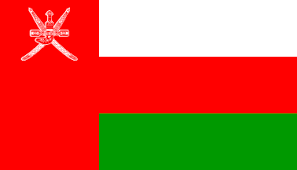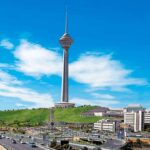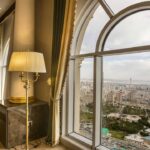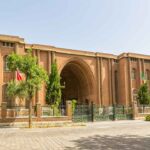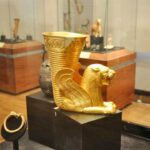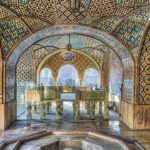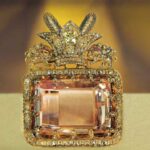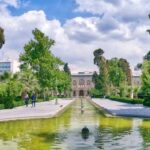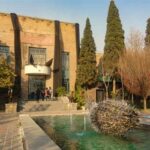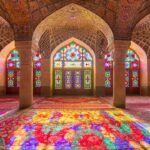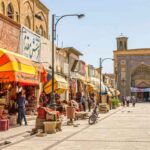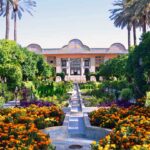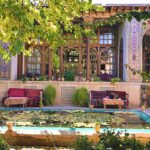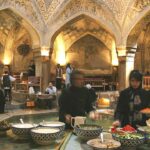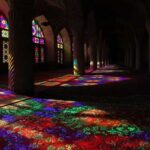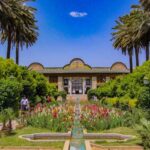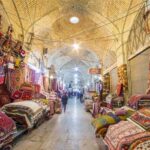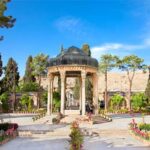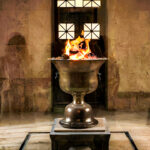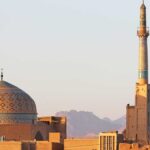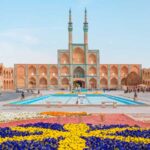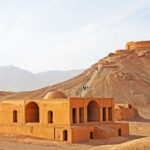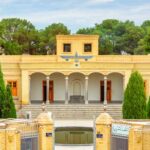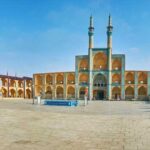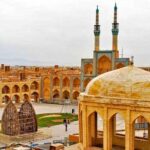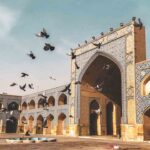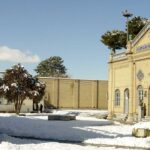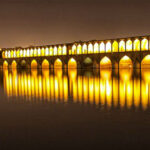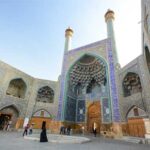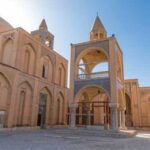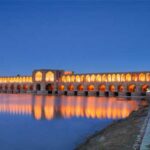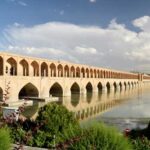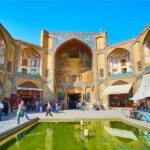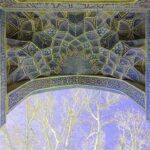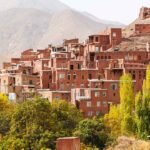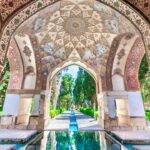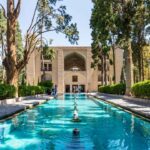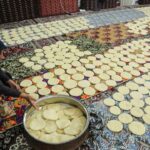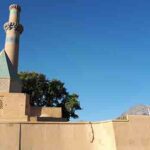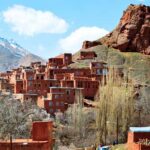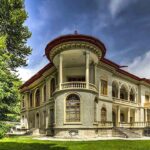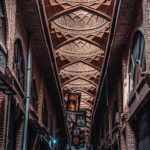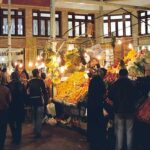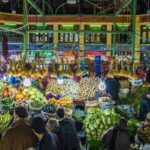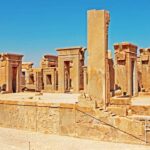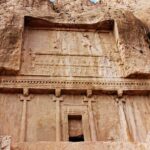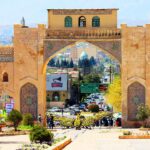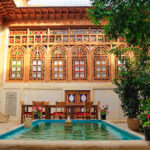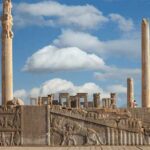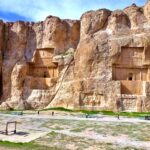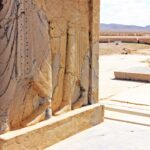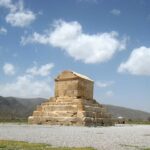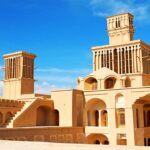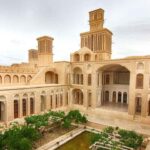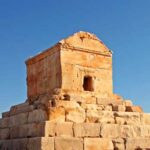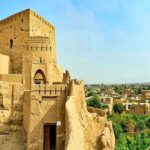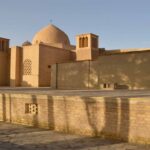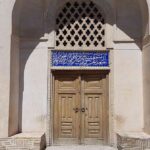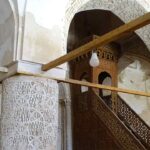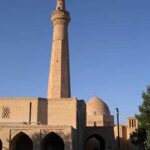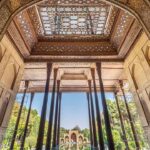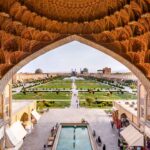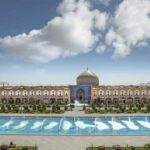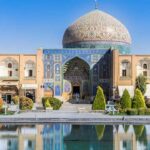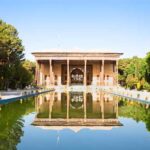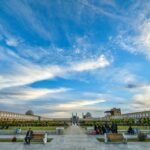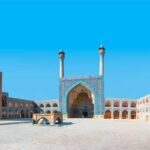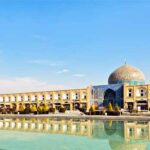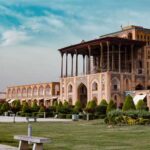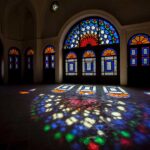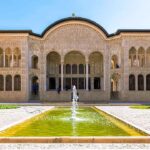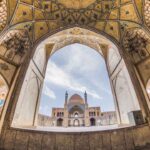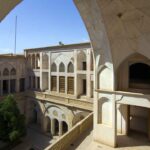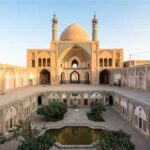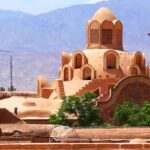- Home
- Tours
- Iran Tours
- Thematic Tours
- Culinary Tours
- Persian Flavors
Persian Flavors
Tour details
description
On this culinary journey you will taste the flavors of Iran, which means a fascinating mixture of very many different and new and exotic tastes. The classic spices in addition to traditional Persian foods or dishes mixed with modern cuisine create a unique taste experience. Depending on where you are, you will try the regional cuisine and you will be traveling on the Oriental Silk Road. In addition to the cuisine, Iran also has a wide variety of sweet specialties. Especially in Isfahan and Shiraz you have the opportunity to marvel at, taste and buy the typical Persian biscuits and desserts.
In addition to the culinary experiences, classic tours and activities are planned. In Isfahan these are the structurally important buildings and Naqshe Jahan Square, in Shiraz Persepolis and in Tehran the palaces of earlier kings.
Tehran-Shiraz
Today you will discover National Museum, one of the most important museums of the world, containing two post-Islamic and pre-Islamic parts. Afterwards you will visit Golestan Palace, the first palace complex of the Tehran, dating back to the 16th century. It features unique Qajar-era tiling and was the most important public palace of Iran in the 19th century. Enjoy delicious plats in Artists House, a cultural-artistic complex where is also a good place to buy handicrafts and artworks. At the end, visit National Jewelry Museum, one of the most precious jewelry museums of the world, which holds Daria-i-Noor (the sea of light), the biggest pink diamond of the world. In the evening fly to Shiraz.
Alternative to National Jewelry Museum: Carpet Museum.
Shiraz
Start your sightseeing in Shiraz by visiting Nasir-ol-molk Mosque, one of the few private mosques of Iran that was constructed in the 19th century. Owing to a different architecture and colorful tiles, this mosque is also known as Rose Mosque. You proceed to Narenjestan Garden, a magnificent 19th-century mansion which was utilized to do official tasks and serve guests. Afterwards you discover Hafiz Tomb, the burial place of a great Iranian Poet (lived in the 14th century) who inspired well-known poets like Goethe. Then you visit Ibn Hamzeh Holy Shrine, the tomb of a well-known Islamic saint, which features an onion dome and stunning mirrorwork. Tourists are completely permitted to visit this site. At the end, you stroll in Vakil Bazaar; roofed bazaar with a domed structure that was constructed in the 18th century and is considered as the most important traditional bazaar of Shiraz. Have dinner in a traditional restaurant with live music which offers you a unique opportunity to enjoy traditions of Iran; architecture, food and music.
Yazd
Sightseeing in Yazd: Silence Towers, also known as Dakhma, are round structures on top of a tall mountain. Zoroastrians used to put the corpses on top of the towers to return them to nature without pollution. Then proceed to Zoroastrian Fire Temple, a temple that holds the sacred fire for several years. This structure was constructed about 100 years ago in Yazd by the Association of the Parsi Zoroastrians of India. Afterwards you visit Water Museum, this traditional house, located at the center of Yazd, displays the construction and operation of qanats. Capture some photos from Amir Chakhmaq Square; the major historic square of Yazd, which was constructed in the 15th and functioned as a Tekyeh. and visit Jameh Mosque, located in the historic district of Yazd, features the tallest historic minarets among Iranian mosques. In the evening, stroll in the Old City and eat sweats such as Persian cup cake and Baklava with Saffron tea in a coffee shop.
Isfahan
Today, you explore Jameh Mosque of Isfahan, one of the five historic jameh mosques of the world that well displays Islamic architecture development. Then proceed to Si-o-se Pol and Khaju Bridges, constructed in the 17th century by the order of Shah Abbas which connects the old town of Isfahan to Jolfa Quarter. The most significant one is Si-o-Se Pol Bridge which leads to Chahar Baq Street and Khaju Bridge where the celebrations were held. Then head for the Vank Cathedral, one of the most amazing Armenian churches of Iran, which contains the most important Armenian museum of Iran. It is an Apostolic Armenian Center. At the end, visit Grand Bazaar of Isfahan, a roofed bazaar belonging to the 16th century. At present, it is the most significant handicraft bazaar of Iran. Finally, you will visit a Gaz workshop, Iranian nougat originated in Isfahan and taste different type of this Persian candy.
Isfahan-Abyaneh-Kashan : 251 km
Depart Isfahan for Kashan. On the way in Natanz visit Jameh Mosque, dating back to the 14th century, features unique tileworks and brickworks on its minaret and dome. Depending on the season, you could visit a saffron farm, where you touch the conditions and methods of cultivate this Iranian precious spice. Afterwards continue to Abyaneh Village and visit traditional bakeries where families bake their origin breads. In Kashan visit Fin Garden; a Persian garden which belongs to the 16th century and includes a few pavilions and a historic bath in which one of the most well-known Iranian ministers was murdered. Have dinner with a local family you let get familiar with culinary and hospitality traditions of Iranians.
Tehran
Visit Saad Abad Palace (White and Green Palaces), a palace in the north of Tehran, where two former kings of Iran resided. This palace hosted Churchill, Roosevelt and Stalin in Tehran Conference in 1942. Then stroll in Tajrish Bazaar with its colorful spices and fresh legumes where you can buy also ingredients. Take a cooking session in the afternoon.
Shiraz-Persepolis-Shiraz : 130 km
This day is consecrated to discover Persepolis, the most important political capital of Persian Empire, founded by Darius the Great. This site includes a number of palaces such Apadana Public Palace and Hundred Column Hall. Then explore Naqsh-e Rustam; the royal necropolis of Achaemenid emperors which is located close to Persepolis. This site is home to a number of Sassanid reliefs. Before your culinary adventure, you make a stop at Quran Gate which referred an Iranian tradition; in the past, all the large cities of Iran had a gate on top of which a Quran was placed to let the travelers pass under Quran before traveling. In the afternoon you will take a cooking session in a traditional house and get familiar with original lots of region.
Shiraz-Pasargadae-Yazd : 452 km
Depart Shiraz for Yazd. On the way visit Pasargadae, the first palace complex of Persian Empire which became an inspiration for Persian Garden. Pasargadae, the dominion center of Cyrus the Great, is also home to his tomb. and in Abarkuh visit Aghazadeh Historical Mansion ; this monument, dating back to the 19th century, is the only house in the world with 2-story windcatchers.
Yazd-Nain-Isfahan
Depart Yazd for Isfahan, the capital of Iran in Safavid era. On the way, visit Narin Castle in Meybod, one of the biggest surrounded adobe cities of Iran, constructed in multi stories and including Sassanid trenches. Continue to Jameh Mosque of Nain with more than 1000 years of antiquity, having been characterized architecturally with a single minaret and underground shabestan (prayer hall). At the end you will visit an Aba weaving workshop where Aba, dress of the mullah, weave in traditional way.
Isfahan
Continue your sightseeing by visiting Chehel Sotoun Palace, the public palace of Shah Abbas, featuring miniature artworks from Safavid court and important historical events. Next, head towards Naqsh-e Jahan Square, the second largest historic square of the world, which is surrounded by a number of the most important monuments of the Safavid era including Imam Mosque, one of the exquisite jameh mosques of Iran, which was constructed by the order of Shah Abbas and features amazing tileworks ; Sheikh Lotfollah Mosque, belonged to the women of the king and lacks minaret and courtyard ; and Ali Qapu Palace, the first multi-story palace of Iran, from whose terrace Safavid kings watched the military march and important events taking place in the square. This palace includes many miniature works belonging to Iranian and foreign artists. At the end, take some leisure time in the afternoon.
Kashan-Qom-Tehran : 257 km
In the morning in Kashan visit Tabatabaei Historical House, this oriental house dates back to the 19th century and features a big courtyard and beautiful ornaments. Then discover Agha Bozorg Mosque; a mosque and theological school featuring a unique dome. It is noteworthy that it is still functioned as a theological school. Then depart Kashan for Tehran. On the way stop in Qom to visit Fatima Holy Shrine; the second most important Shia religious site in Iran. and a Sohan workshop, a traditional Persian saffron brittle toffee made in Iran. Its ingredients consist of wheat sprout, flour, egg yolks, rose water, sugar, butter or vegetable oil, saffron, cardamom, and slivers of almond and pistachio.
